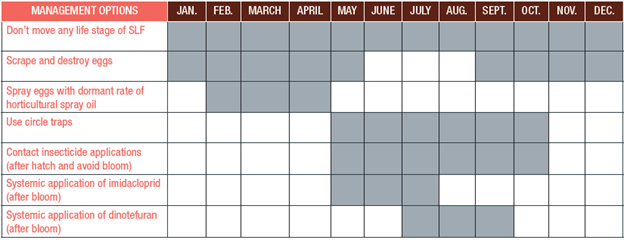For comprehensive management recommendations, please see Penn State’s spotted lanternfly management guide.
SLF Impact
Signs of SLF feeding include:
- oozing sap originating from wounds
- wilting
- leaf curling
- yellowing
- canopy dieback
SLF does not kill every tree it feeds on. Rather, it is a plant stressor that can damage hosts in combination with other stressors (such as disease or weather). However, following high infestation levels or multiple years of sustained feeding, it is possible for SLF to significantly weaken healthy host trees. Currently, grape growers in heavily infested areas are experiencing significant economic loss due to direct damages caused by feeding. Yield loss, reduction in cold hardiness of vines, and direct vine mortality have been observed.
As spotted lanternflies feed, they excrete a sugar-rich substance known as honeydew (shown in the picture below). Nuisance insects such as wasps and ants may be attracted to accumulations of oozing sap and honeydew. A build-up of honeydew may also become colonized by sooty mold fungi, which can act as a photosynthesis barrier.
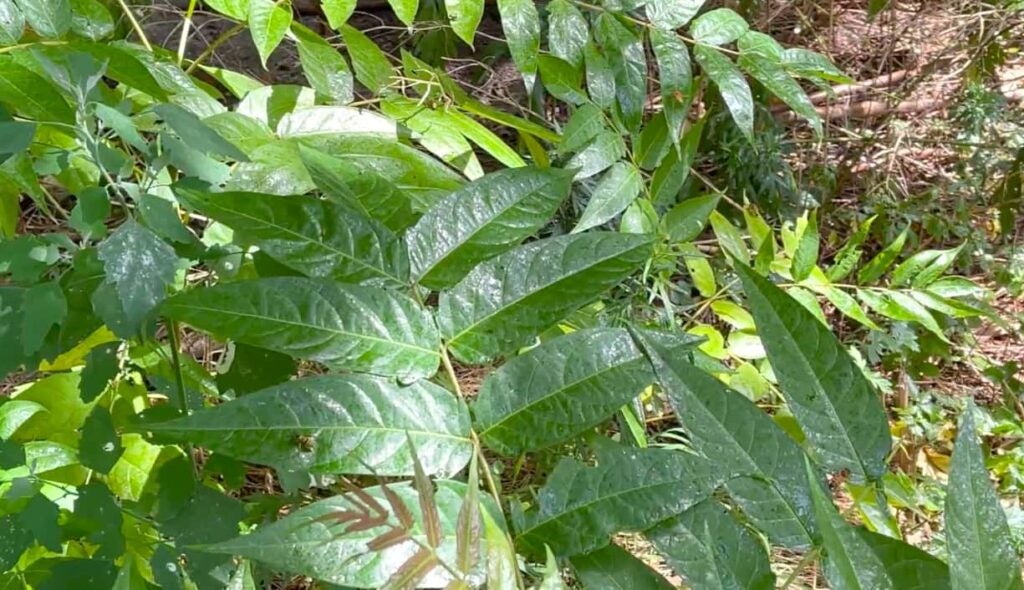
Though the extent of the SLF long-term impact is unknown, an economic report in Pennsylvania estimated that it could drain Pennsylvania’s larger economy of $324 million annually, through direct effects on the agricultural and forestry industries, as well as through indirect and induced effects. Currently, the greatest impact has been observed in Pennsylvania vineyards, where yield reductions of up to 80-90% have been reported. Re-infestation pressure following initial insecticide knockback has resulted in a drastic increase in the frequency of applications, with some growers spraying every 3-5 days during peak activity.
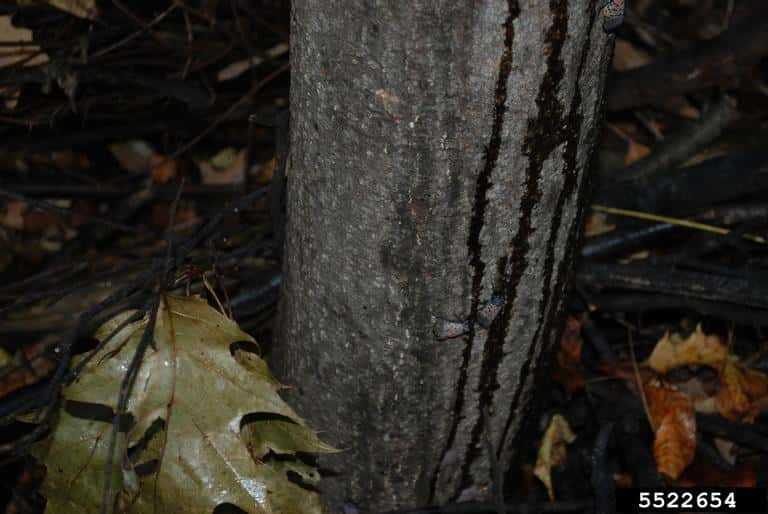
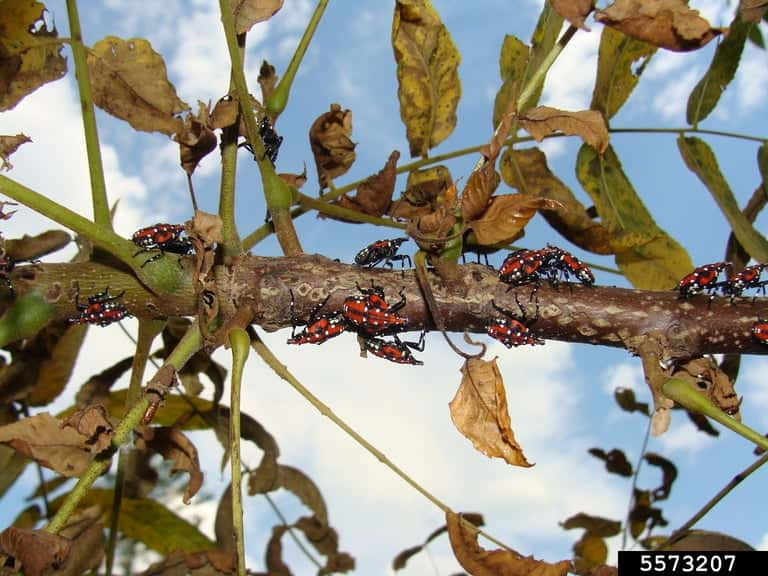
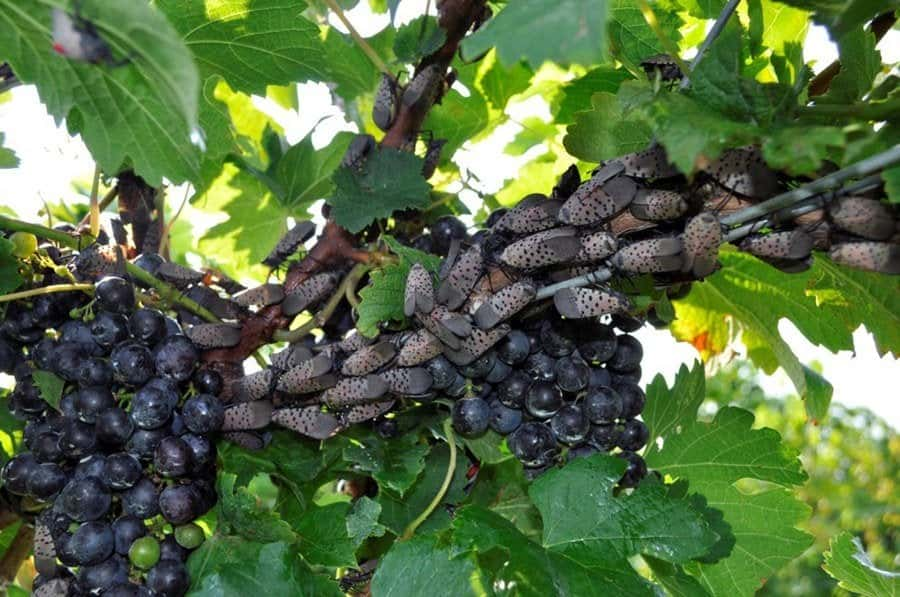
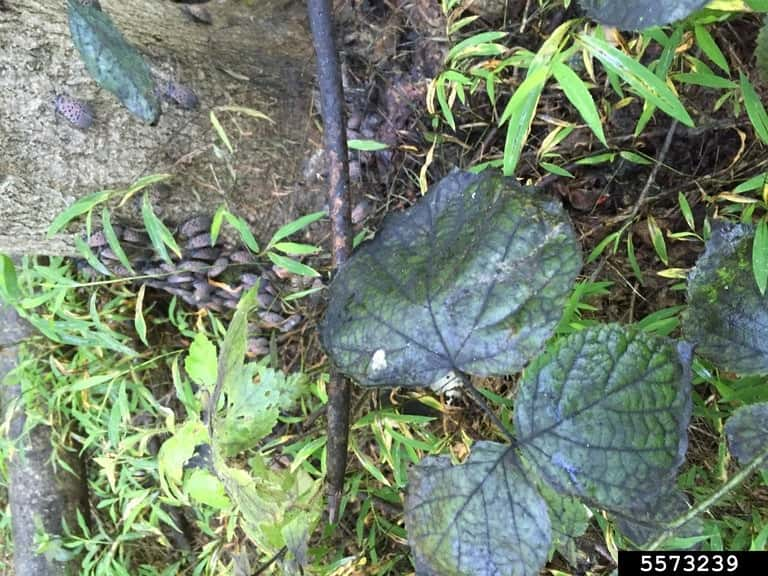
“SLF cannot be prevented from coming onto any one property… additionally, low numbers of SLF may not necessitate treatment”Pennstate extension
SLF Management
For comprehensive management recommendations, please see Penn State`s spotted lanternfly management guide. Management guides for grape growers and landscape professionals are also available through Penn State Extension.
For residents, growers, and landscape professionals, available management options include mechanical, cultural, and chemical control. Additionally, potentials for biological control are currently being researched. Scouting for SLF is essential in management, and it is crucial that landowners know where the infestation is and the degree of severity deciding on treatment. Additionally, the most effective management strategy likely involves an integrated approach which applies a combination of the following options.
- Stop the spread: Spotted lanternflies are hitchhikers, and it is crucial that vehicles and outdoor equipment (grills, outdoor furniture, landscaping supplies, mowers, etc.) are checked before moving if you are in the known range of SLF to stop the spread. Check for the egg masses, nymphs, and adults at appropriate times of the year.
- Finding and destroying egg masses: Mechanical destruction of egg masses may help reduce SLF numbers locally, but continued management strategies may be necessary later in the season or following years.
- Removing Tree of Heaven (Ailanthus altissima), an SLF preferred host that is an invasive species: Although preferred host removal has not specifically been evaluated for success in managing SLF populations, this strategy can prevent honeydew and sooty mold accumulation on property beneath. When removing tree-of-heaven, proper treatment with herbicide must be applied to obtain effective control. For help identifying and treating tree-of-heaven, see the Penn State Extension’s Tree-of-Heaven publication.
- Insecticides: Insecticide applications are often utilized when spotted lanternflies are present in considerable numbers and other control methods are not effective. Research from Penn State University has demonstrated that many insecticides are effective at killing SLF (see Penn State’s SLF management guide for products available for use on SLF in Pennsylvania). However, there are many things to consider before deciding to use an insecticide to kill SLF, including:
- the number of SLF present,
- whether they are on a preferred host plant where they are likely to remain or on a plant they will move away from after a shorter visit,
- the size and health of the plant,
- the presence or absence of preferred host plants in the landscape,
- and the life stage of SLF present.
- Biological control: Currently, there are no biological control agents available for release to control spotted lanternfly. Researchers are testing a potential parasitoid, Dryinus sinicus, from China as a biocontrol agent for spotted lanternfly that attacks the second and third instar nymphs. The URI Biocontrol is contributing to the host specificity testing of these two potential parasitoids (see URI Biocontrol Lab`s SLF Biocontrol page). Some generalist predators (praying mantids, spiders, spined soldier bugs, etc.) have been observed attacking spotted lanternflies at low numbers. Two fungal pathogen species were also found attacking spotted lanternflies in Pennsylvania. One species, Beauveria bassiana, is commercially available as a biopesticide but is not currently recommended for SLF management unless optimized by future research.
